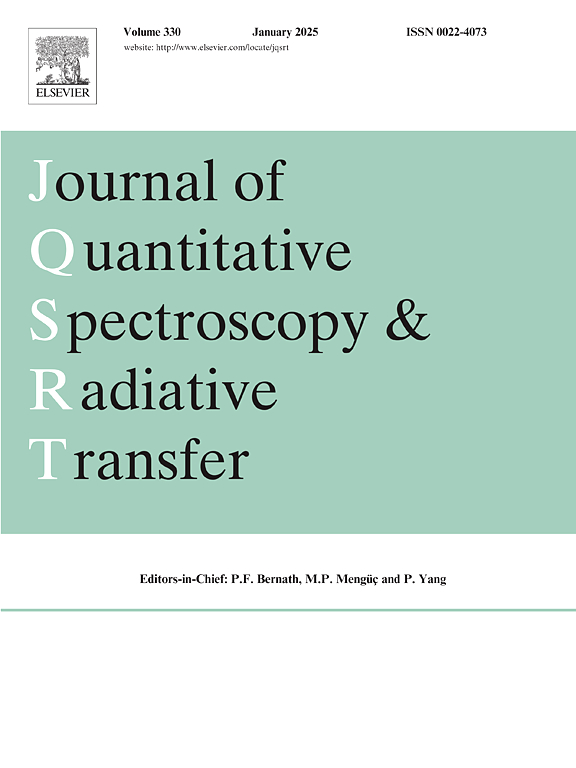现有光污染监测网络传感器位置的约束优化
IF 2.3
3区 物理与天体物理
Q2 OPTICS
Journal of Quantitative Spectroscopy & Radiative Transfer
Pub Date : 2025-03-12
DOI:10.1016/j.jqsrt.2025.109396
引用次数: 0
摘要
城市地区夜间高水平的人造光辐射对环境和人类健康造成不利影响。适当的监测为规划公共政策和衡量其实现程度提供了信息。因此,有必要优化设计或重新设计光污染监测网络,重点关注影响最大的区域,如自然保护区,并提供整个感兴趣区域的代表性测量。本文讨论了现有监测网络的最佳重新设计和改进,这些网络受限于重新安置有限数量的传感器。此外,我们还引入了评估网络覆盖区域及其恢复整个区域人工光发射水平的精度的指标。然后,我们找到最大限度地提高这些指标的传感器位置,从而提高监测性能。我们的结果是新颖的设计,使用准时测量来估计不同数量的传感器感兴趣的整个区域的光照水平。最后,方法、指标和研究案例为重新设计健康、城市或生态规划敏感区域的监测网络以及光发射强度和现有监测网络提供了明确的指导方针。本文章由计算机程序翻译,如有差异,请以英文原文为准。
Constrained optimization of sensor locations for existing light-pollution monitoring networks
The high levels of nocturnal artificial light emissions from urban areas induce adverse effects on the environment and human health. Having adequate monitoring provides information for planning public policies and measuring their degree of achievement. Consequently, there is a need for optimal designing or redesigning of Light-Pollution Monitoring Networks focused on sensing the most impacting regions such as protected natural areas, and delivering representative measurements of the whole region of interest. This article addresses the optimum redesign and improvement of existing monitoring networks constrained to relocating a limited number of sensors. Furthermore, we introduce metrics to evaluate the covering region of a network and its accuracy for recovering artificial light emission levels of the whole area. Then, we find the sensor locations that maximize such metrics and, consequently, the monitoring performance. Our results are novel designs that use punctual measurements to estimate light levels of the whole region of interest for different numbers of sensors. Finally, the method, metrics, and a study case provide clear guidelines for the re-design of monitoring networks regarding sensitive zones for health, urban, or ecological planning, as well as the intensity of light emissions and existing monitoring networks.
求助全文
通过发布文献求助,成功后即可免费获取论文全文。
去求助
来源期刊
CiteScore
5.30
自引率
21.70%
发文量
273
审稿时长
58 days
期刊介绍:
Papers with the following subject areas are suitable for publication in the Journal of Quantitative Spectroscopy and Radiative Transfer:
- Theoretical and experimental aspects of the spectra of atoms, molecules, ions, and plasmas.
- Spectral lineshape studies including models and computational algorithms.
- Atmospheric spectroscopy.
- Theoretical and experimental aspects of light scattering.
- Application of light scattering in particle characterization and remote sensing.
- Application of light scattering in biological sciences and medicine.
- Radiative transfer in absorbing, emitting, and scattering media.
- Radiative transfer in stochastic media.

 求助内容:
求助内容: 应助结果提醒方式:
应助结果提醒方式:


